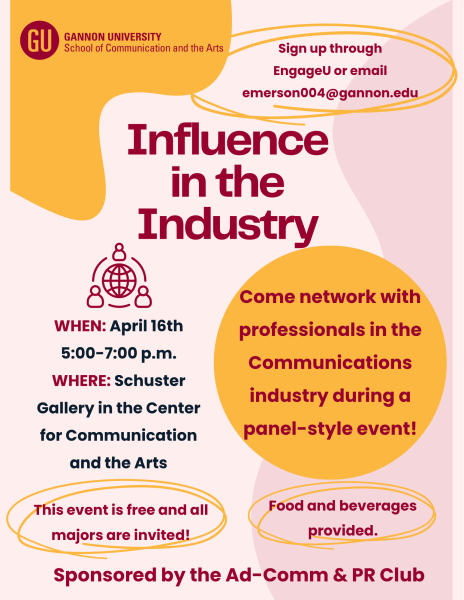Editorial is in response to News Editor Samantha Griswold’s Perspective column Jan. 20 “Pardon me, but can you please cover up a bit?”
I was initially disappointed in The Gannon Knight editorial about breastfeeding, but my disappointment has been eclipsed by my excitement to advance the conversation. I’ve had a challenging and blessed experience as a first-time breastfeeding mom.
Comments on GannonKnight.com have already addressed the issue of sexualizing women’s breasts, so I’d like to add to the conversation my answers to the writer’s questions “Why don’t you cover up?” and “Why don’t you just give a bottle?”
First, it is important to understand the science of breastfeeding, which helps explain why covers and bottles may be unhelpful for a mother-child nursing relationship.
Breast milk is the perfect cocktail of fat, protein, unique antibodies and nutrients for a baby. The composition of the milk even naturally changes over time to adjust to the growing child’s changing needs. Also, the nurturing and bonding between a nursing mother and child is a gift hard to put into words.
For these reasons, some women choose to breastfeed as long as the baby is interested—the WHO recommends at least up to two years—even though the commitment can be challenging. Breastfed babies eat 8-12 times per day.
The mother-child nursing relationship regulates the amount of milk the mother makes in terms of supply and demand. The nursing mom feeds her child based on hunger cues, rather than on a schedule, to ensure she produces adequate milk. As one can imagine, this baby-centered approach makes it hard to go anywhere and guarantee the child won’t need to eat.
Denying or delaying a feeding can have a long-term negative impact on the nursing relationship, which is so rich in both nutritional and relational benefits. When a mom delays a feeding or supplements with formula, the body translates that as, “I have made more milk than needed, so next time I’ll make less.”
Simply put, the baby then may not have what he or she needs, and the weaning process may prematurely begin. So if a woman is breastfeeding in public, she should be applauded for honoring the baby’s schedule, even if it may be inconvenient.
My 10-week old son eats eight times per day on average. I am currently typing this in Panera, one-handed, while all 17 pounds of him is asleep in my left arm (which, by the way, is also asleep). He just finished nursing even though we nursed right before we left the house about an hour ago.
I didn’t feed him in public to make a political statement; I did it because he was hungry. To deny him a comfortable feeding would have had negative impacts on both him and me. Wearing a cover is not a comfortable option for a variety of reasons.
First, I am still learning how to position the baby on my breast (“latch”), which is challenging and painful without seeing what I’m doing. I’ve tried covering, but ducking my head underneath the cover to see (like an awkward mom hump under a pastel-patterned front-cape) ironically draws even more attention to what we’re doing. Second, the cover causes him to get overheated and agitated, which leads to an ineffective feeding and frustration.
So, why not just give a bottle? Breast pumps can be used to mimic a feeding session and express milk from the breast to give in bottles. Pumps are wonderful because they enable a mother to continue her nursing relationship even while away from baby.
However, moms often have a love/hate relationship with pumping because it is time-consuming, logistically complicated and sometimes unpleasant. To give a baby a bottle of breast milk means that woman had to pump, which is a greater sacrifice of time and energy for a mom like me, who finds nursing more mutually beneficial than pumping.
Bottles can feed babies, but they do not stimulate the milk-making and bonding hormones like nursing at the breast. Plus, if a bottle is introduced too early, the baby may experience “nipple confusion” and be weaned from the breast, so new moms are wise not to use them right away if possible.
I’m deeply grateful for the support I’ve had from my husband, family, colleagues and friends as a nursing mom. If you see me or other women nursing on campus, I hope you support the pocket of peace we work to create with our child in that moment. (I’d also welcome a smile, thumbs up or cup of water, because those things help!)
For more information on breastfeeding, look up La Leche League and kellymom.com.
JESSIE BADACH HUBERT
[email protected]

















